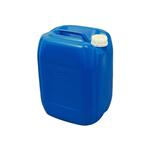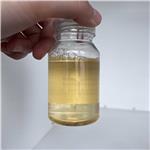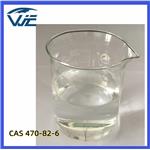- Cineole
-

- $5.00 / 200kg
-
2024-04-28
- CAS:470-82-6
- Min. Order: 1kg
- Purity: ≥99%
- Supply Ability: 200mt/year
- Cineole
-

- $100.00 / 1drum
-
2023-09-13
- CAS:470-82-6
- Min. Order: 1drum
- Purity: 99
- Supply Ability: 5000
- Cineole
-

- $30.00 / 1KG
-
2023-08-16
- CAS:470-82-6
- Min. Order: 1KG
- Purity: >99%
- Supply Ability: 50000kg/Month
|
| | 1,8-Cineole Basic information |
| | 1,8-Cineole Chemical Properties |
| Melting point | 1-2 °C(lit.) | | Boiling point | 176-177 °C(lit.) | | density | 0.9225 | | vapor pressure | 1.22hPa at 20℃ | | refractive index | n20/D 1.457(lit.) | | FEMA | 2465 | EUCALYPTOL | | Fp | 122 °F | | storage temp. | 2-8°C | | solubility | 3.5g/l | | form | Liquid | | color | Clear colorless to slightly yellow | | Odor | at 10.00 % in dipropylene glycol. eucalyptus herbal camphor medicinal | | Odor Type | herbal | | Water Solubility | Soluble in water(3500 mg/L (at 21°C). Miscible with ether, alcohol, chloroform, glacial acetic acid, oils. Soluble in ethanol, ethyl ether; slightly soluble in carbon tetrachloride. | | FreezingPoint | min. 1.4 ℃ | | JECFA Number | 1234 | | Merck | 14,3895 | | BRN | 105109 | | Dielectric constant | 4.8399999999999999 | | Stability: | Stable. Flammable. Incompatible with acids, bases, strong oxidizing agents. | | InChIKey | WEEGYLXZBRQIMU-WAAGHKOSSA-N | | LogP | 3.4 | | CAS DataBase Reference | 470-82-6(CAS DataBase Reference) | | NIST Chemistry Reference | Eucalyptol(470-82-6) | | EPA Substance Registry System | Eucalyptol (470-82-6) |
| | 1,8-Cineole Usage And Synthesis |
| Description | Eucalyptol is a bicyclic monoterpene that has been found in Eucalyptus and other plants, including C. sativa and has diverse biological activities, including anti-inflammatory, decongestant, antinociceptive, and insect repellent properties. Eucalyptol (10 μM) inhibits TNF-α, IL-1β, IL-4, and IL-5 production by primary human lymphocytes stimulated by ionomycin and phorbol 12-myristate 13-acetate (PMA; ). It also decreases LPS-induced mucus production by primary human nasal turbinate slices when used at a concentration of 10 μM. Eucalyptol (400 mg/kg) decreases carrageenan-induced hind paw edema in rats and reduces the time spent licking the hind paw in a formalin-induced nociception test in mice. It inhibits A. aegypti mosquitoes from feeding on anesthetized gerbils when applied topically at a concentration of 10% and from laying eggs in an ovipositional bioassay when used at a concentration of 1% in standing water. Formulations containing eucalyptol have been used in mouthwash and cough suppressants. | | Chemical Properties | Eucalyptol has a characteristic camphoraceous odor and fresh, pungent, cooling taste. | | Chemical Properties | 1,8-Cineole occurs
in many terpene-containing essential oils, sometimes as the main component. For
example, eucalyptus oils contain up to 85% 1,8-cineole and laurel leaf oil contains
up to 70%. It is a colorless liquid with a characteristic odor, slightly reminiscent of
camphor.
1,8-Cineole is one of the few fragrance materials that is obtained exclusively
by isolation from essential oils, especially eucalyptus oils. Technical-grade 1,8-
cineole with a purity of 99.6–99.8% is produced in large quantities by fractional
distillation of Eucalyptus globulus oil. A product essentially free from other products
can be obtained by crystallization of cineole-rich eucalyptus oil fractions | | Occurrence | Its name is derived from its presence in the essential oils of Eucalyptus globulus and Melaleuca leucadendron
L. (essential oil of cajeput). It was originally identified in the essential oil of Artemisia maritime and subsequently in a large number
(approx. 270) of other essential oils: rosemary, laurel leaves, clary sage, myrrh, cardamom, star anise, camphor, lavender, peppermint,
Litsea guatemalensis, Luvunga scadens Roxb., Achillea micrantha and Salvia triloba. The essential oil of Eucalyptus polibrac tea
has been reported to contain up to 91% eucalyptol. Also reported found in citrus oils and juices, guava, papaya, cinnamon bark, root
and leaf, ginger, corn mint oil, spearmint, nutmeg, pepper, Thymus zygis, cardamom, cranberry, laurel, pepper, sweet marjoram,
coriander, Spanish origanum, Ocimum basilicum, curcuma, sage, laurel, sweet and bitter fennel, myrtle leaf and berry, pimento and
calamus. | | Uses | eucalyptol is considered an antiseptic. This is a monoterpene compound that provides the fragrance associated with the essential oil of eucalyptus. eucalyptol is also used to fragrance cosmetic preparations. | | Uses | Labelled 1,8-Cineol, the chief constituent of oil of eucalyptus. Used as pharmaceutic aid (flavor). | | Uses | 1,8-Cineol is the chief constituent of oil of eucalyptus. Used as pharmaceutic aid (flavor). | | Preparation | By fractional distillation (170 to 180°C) from those essential oils containing high levels of eucalyptol, such as Eucalyptus
globulus (approx. 60%), and subsequent separation of the product by congealing the distillate. | | Definition | ChEBI: 1,8-cineole is a cineole. It has a role as a flavouring agent. | | Aroma threshold values | Detection: 1 to 64 ppb. Aroma characteristics at 1.0%: sweet, cooling, fresh, chemical pine, slightly minty
with a spicy cardamom nuance. | | Taste threshold values | Taste characteristics at 5 ppm: cooling, fresh, oily, green, spicy, pine-like. | | General Description | Colorless liquid with a camphor-like odor. Spicy cooling taste. | | Air & Water Reactions | Highly flammable. Insoluble in water. | | Reactivity Profile | Cineole will react with acids and bases. | | Fire Hazard | Flash point data for Cineole are not available but Cineole is probably combustible. | | Flammability and Explosibility | Flammable | | Biochem/physiol Actions | Taste at 30 ppm | | Anticancer Research | A statistically significant reduction of cell proliferation was observed compared tothe control cells when tested on RKO cells and human colon cancer cell linesHCT116 injected into the SCID mice. The 1,8-cineole induced apoptosis by inactivatingsurviving and Akt, activating p38, inducing PARP, and cleaving caspase-3(Rodd et al. 2015). | | Toxicology | Eucalyptol, a colourless organic compound, is a monoterpenoid and an ether. Among its various uses, eucalyptol is predominantly used as an insecticide and in fragrances (Klocke et al. 1987). The ques- tion of whether eucalyptol could potentiate toxicity has been assessed because of its widespread use in households. When Kunming mice received feed with a high dose of eucalyptol, liver and kidney tissue demonstrated vacuolar and granular degeneration (Xu et al. 2014). When the animals were fed with a subacute dose of eucalyptol, no discernible difference in body weight was observed (Xu et al. 2014). Eucalyptol’s safety profile has been assessed. Fatality after ingestion of eucalyptol oil has been reported; the approximate lethal dose of eucalyptol in the human is between 0.05 and 0.5 mL/kg of body weight (Hindle 1994). When male rats received eucalyptol, eosinophilic protein droplets accumulated in a dose- dependent fashion (Kristiansen and Madsen 1995). However, in a study of mutagenicity using CHO cells, eucalyptol did not induce mutagenicity as evidenced in the sister chromatid exchange assay (Galloway et al. 1987). Likewise, eucalyptol did not induce carcinogenicity in pathogen-free CFLP mice (Roe et al. 1979). | | Metabolism | Eucalyptol undergoes oxidation in vivo with the formation of hydroxy cineole, which is excreted as hydroxycineoleglucuronic acid (Williams, 1959). | | Purification Methods | Purify 1,8-cineol by dilution with an equal volume of pet ether, then saturate with dry HBr. The precipitate is filtered off, washed with small volumes of pet ether, then cineole is regenerated by stirring the crystals with H2O. It can also be purified via its o-cresol or resorcinol addition compounds. Store it over Na until required. Purify it also by fractional distillation. It is insoluble in H2O but soluble in organic solvents. [IR: Kome et al. Nippon Kagaku Zasshi [J Chem Soc Japan (Pure Chem Sect)] 80 66 1959, Chem Abstr 603 1961, Beilstein 17 II 32, 17/1 V 273.] |
| | 1,8-Cineole Preparation Products And Raw materials |
|